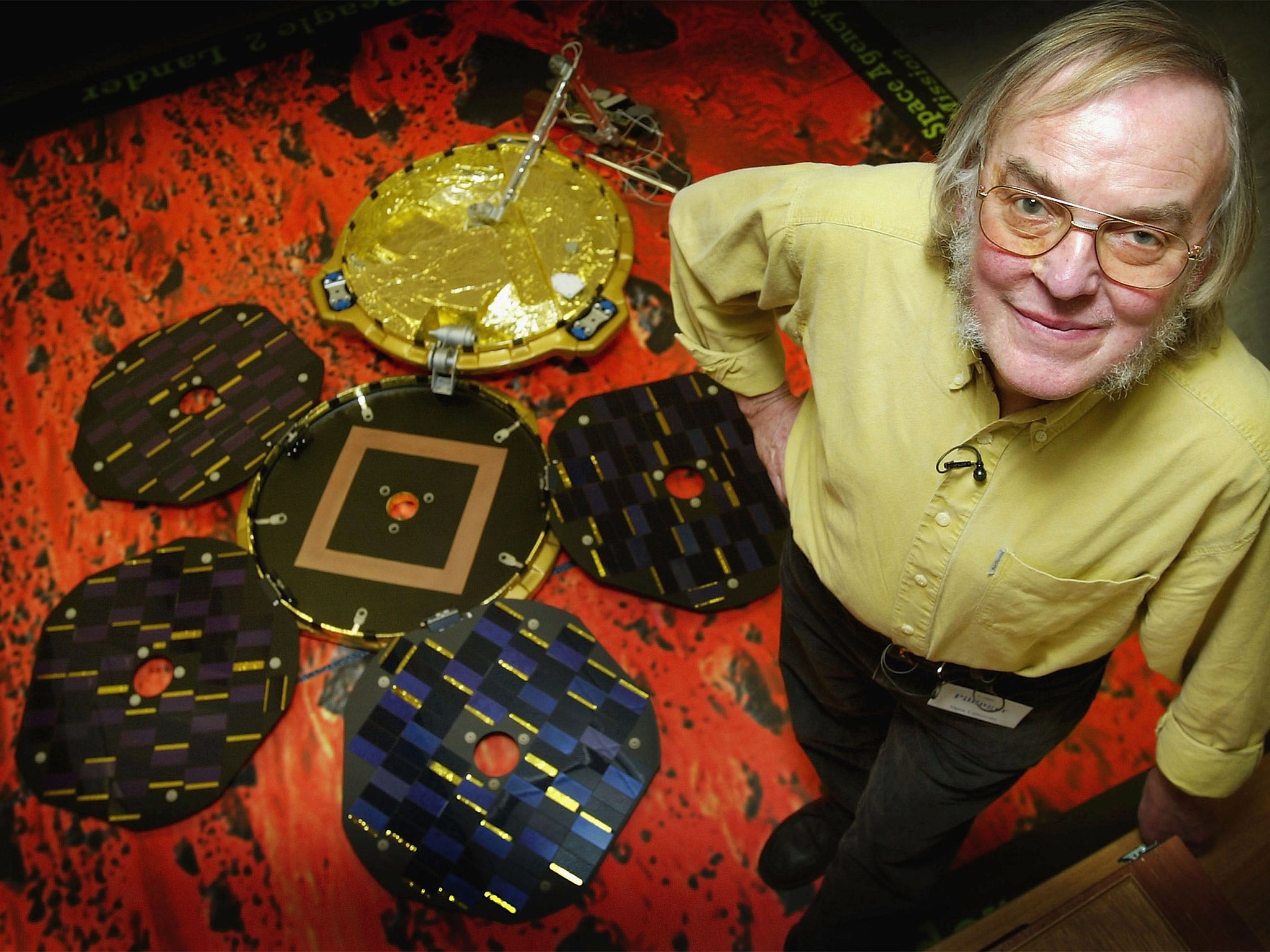The Beagle had landed: UK Space Agency confirms British space probe arrived intact on Mars but didn't get the energy for radio transmission
Scientists say they have now found the stricken spacecraft

The Beagle had landed safely after all, but it didn’t have the energy to bark.
The UK Space Agency confirmed that the only British space probe sent to Mars came down intact on the Red Planet but failed to fully deploy its solar panels for a successful radio transmission.
More than 11 years after Beagle 2 was lost in the early hours of Christmas Day 2003, scientists say they have now found the stricken spacecraft, intact but only partially deployed just 5km from the centre of its intended landing site.
Images taken by the HiRISE camera on board Nasa’s Mars Reconnaissance Orbiter reveal that the tiny space probe, just two metres across when fully unfolded, is still attached to its pilot drogue parachute with its main parachute stretched out nearby, indicating that it had gone through all the necessary manoeuvres for entry, descent and landing.
However, the images also show that its four solar panels did not completely unfurl as intended, meaning they failed to charge up the batteries that were supposed to extend its radio aerial and so permit a success transmission of its nine-note call sign written by the Britpop band Blur.
Beagle 2 hitched a ride on the European Space Agency’s Mars Express mission and was the brainchild of Professor Colin Pillinger, a planetary scientist at the Open University. Dr Pillinger died last year not knowing what happened to his space probe, which he named after the ship on which Charles Darwin made his famous voyage of discovery in the 19th Century.
"The history of space exploration is marked by both success and failure. This finding makes the case that Beagle 2 was more of a success than we previously knew and undoubtedly an important step in Europe’s continuing exploration of Mars," said David Parker, the space agency’s chief executive.
Dr Parker told the Royal Society in London: "What we can say with some confidence today is that Beagle 2 is no longer lost and furthermore it seems we are not looking at a crash site. We have good evidence of Beagle 2 resting on the surface of Mars.
"These images are consistent with the Beagle 2 having successfully landed on Mars but then only partially deploying itself."
Professor Mark Sims of Leceister University said the images indicated that one of the four solar panels became stuck in the closed position, possibly as a result of being trapped by one of the inflatable air bags designed to cushion the impact with the ground.
“To be frank, I had all but given up hope of ever knowing what happened to Beagle 2. The images show that we came so close to achieving the goal of science on Mars. The images vindicate the hard work put in by many people and companies both here in the UK and around Europe and the world in building Beagle 2,” Professor Sims said.
John Bridges, of the University of Leicester, said the HiRISE camera spotted the lander from 300km above Mars, just 5km from its intended landing site. It found three objects, believed to be the lander and its landing equipment. They “glinted” in the sun but cast no shadow, he said. “This is not just a pile of rocks and sand on the Martian surface. This is an alien object, a man-made object.”
Yesterday, Dr Pillinger’s daughter Shusanah said her father would have been pleased at the success and so would have defied his critics “who want to say that Beagle 2 is a failure”.
Ms Pillinger added: “This shows such an immense success and not forgetting all the other things that went on in the background of Beagle 2, all the promotion of science, all of the inspiration to children. He would love that this is in the news again. He would love that this could inspire that next generation to do Beagle 3.”
Subscribe to Independent Premium to bookmark this article
Want to bookmark your favourite articles and stories to read or reference later? Start your Independent Premium subscription today.

Join our commenting forum
Join thought-provoking conversations, follow other Independent readers and see their replies